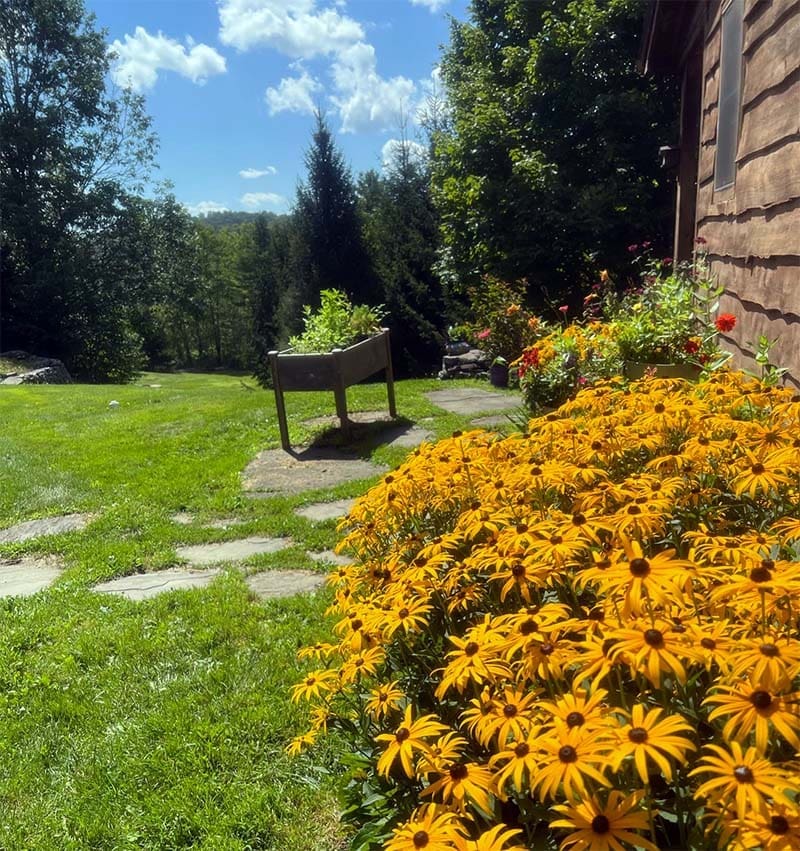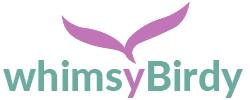
One of the best ways to attract an interesting array of birds to your area, and even better to help/support bird populations, is to provide plantings for birds as well as an environment which will entice them to stay rather than fly on by as they move to a more appealing area.
Offering bird seed is great, especially for those of us in cold climates, but it is not the most effective way of attracting birds. In fact, many birds never even visit a feeder!
When I started birding, I bought a basic feeder with some black oil sunflower seeds. It has grown into a full blown hobby (obsession?) with several types of feeders, types of seeds, and timed plantings to feed birds with seeds/berries/nectar.
The timed plantings also provide host plants (i.e., food) to insects for the birds to then hunt and feed their young. This was not an overnight process and it is very certainly not done – as it is still a work in progress.
It was a very daunting task at first, but by breaking it down here and in future articles I hope you find it to be more approachable to build a beautiful and effective bird habitat!
Why is gardening and growing plants for birds so important? Caterpillars!!

Bird populations have diminished at alarming rates over the years. One of the reasons the scientific community (such as from Dr. Doug Tallamy) will cite is the loss of habitat and food sources, particularly caterpillars, which he describes as “nature’s hot dogs.”
Baby birds eat exclusively soft, squishy insects (96 percent of birds feed exclusively insects to their young). The takeaway is if you want birds to come to your yard, you need to provide them with things to feed their young.
To do this, it is strongly recommended that you plant flower/shrubs/trees that are native to YOUR specific region. Birds have been around for millennia, and they want the food they’ve co-evolved with.
One of the saddest parts for me about the loss of these species is the loss of “acoustic diversity.” That is, as we lose species/populations of birds we are having quieter and quieter springs (check out the book Silent Spring by Rachel Carson).
What can we do to help?
Much of this depends on the area in which you live and the habitat you reside. Also, if you want to attract certain birds you will want to look up what types of plants may attract them.
Of course, you can supplement birds with feeders (like these here– a simple one like this platform can cater to all sorts of birds, while you can also start with a more specialized feeder like this hummingbird feeder).
In my area, planting Bee Balm is what attracted hummingbirds. In fact, with Bee Balm in season they visit the flowers more than they ever do the feeder!
Importantly, planting a native garden is crucial in support birds and attracting them. For instance, the American Goldfinch, which likes weedy fields and overgrown areas, will be attracted to Asters and sunflowers. They also use native milkweed for their nests.
How to get started?

The cool thing about attracting birds through gardening is there is so much you can do. The hard part is that it can be overwhelming to start! I recommend starting small – take a small patch in your yard.
Four things to implement could include:
- Food (for adult birds, as well as their young!)
- Water
- Shelter/Cover
- Nesting
Food:
If you want to provide food for birds there are SO many choices. You can plant berries, fruits, seeds, or nectar. You can even search for native plants in your area (in the US) through Audubon’s site.
Of course, bird food can be provided to attract birds to your yard. The types of feeders/food will depend on what birds you want to attract to your area.
Feeders can be filled with many different things, but a popular all around favorite is the sunflower seed (which attracts a large amount of birds- I buy this kind here!)
Water:
Another way to support birds is to provide water. My sister built a small pond in her city yard- and it is FLOODED by tons of birds daily to take a drink and have a bath.
Bird baths (this is the first one I bought) can provide a nice source of freshwater as well. Literally, as I am writing this, a blue jay just announced his presence with a loud call and then started taking a drink in that bath (which I take to mean that it is bird approved).
Shelter:
This is for the protection of birds when they’re feeding, drinking, or taking care of young. Trees, shrubs, and bushes all provide cover to birds from predators (such as other birds, or unfortunately, cats). Place feeders near the cover areas to provide a quick escape from predators.
Nesting/raising young:
Again, much of this depends on what type of bird you are interested in attracting. For instance, if you wanted to attract the beautiful Bluebird, you can get a nest box (here’s a book that I found helpful).
If you want to attract a house wren, then a different type of house is needed. Each bird has a preference for their home. The trees, shrubs, or shelter will also support the birds as they hunt for insects and as their young leave the nest.
Special notes:
You do NOT need a large area or yard.
Container gardening can be a wonderful way to attract birds (such as hummingbirds for nectar) to your space. It needn’t be large and every little bit goes a long way to support birds. I plant dill, parsley, and fennel to attract Eastern Black Swallowtails and bought a container just for this!

Avoid insecticides!!
Not just because they can be harmful to birds who ingest contaminated bugs, but by killing insects we’re actually killing birds. They NEED insects to feed their young. In fact, they need a LOT of insects.
Make an effort to remove invasive species.
Invasive species throw off the balance of the local ecosystem, including the many insects that are needed to feed birds and their young. Butterfly gardens are a great way to do this, as long as they include host plants for the caterpillars which is really what the birds are interested in.
Clean your feeders.
Importantly, be sure to clean feeders, baths/water dishes regularly (especially in hot weather) as they can harm bird populations by spreading disease.
Happy birding!
This is a big overview of starting to attract birds to your yard, and I hope over time to break down each of these to provide more detailed information on these steps. I hope this is helpful – happy birding!!
whimsyBirdy Mission
Our mission is to share our love of birds and nature with you and add a little dash of whimsy along the way.
We share bird watching videos and nature videos from our home and surrounding areas on Youtube and we publish bird and nature articles on the whimsyBirdy Blog.
Please subscribe to our Youtube Channel and let’s share the love of birds and nature with the world!
Birds are truly one of our greatest treasures here on earth, and we want them to thrive for generations to come. We also want to encourage everyone to develop a deep appreciation for nature and all the amazing animals (including humans!) that live there.
If you would be interested in making a monthly support pledge to help us with our mission, please visit our Patreon Membership Page.
